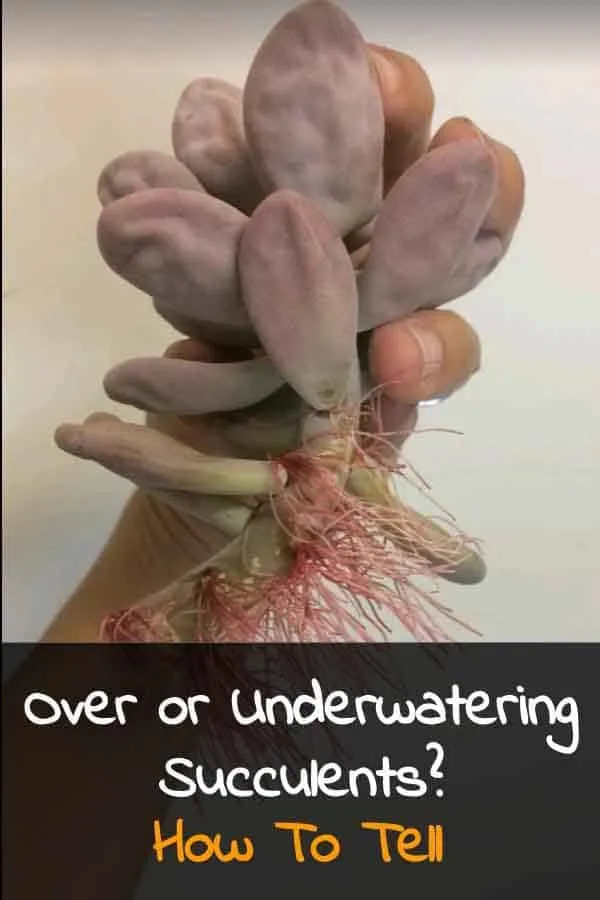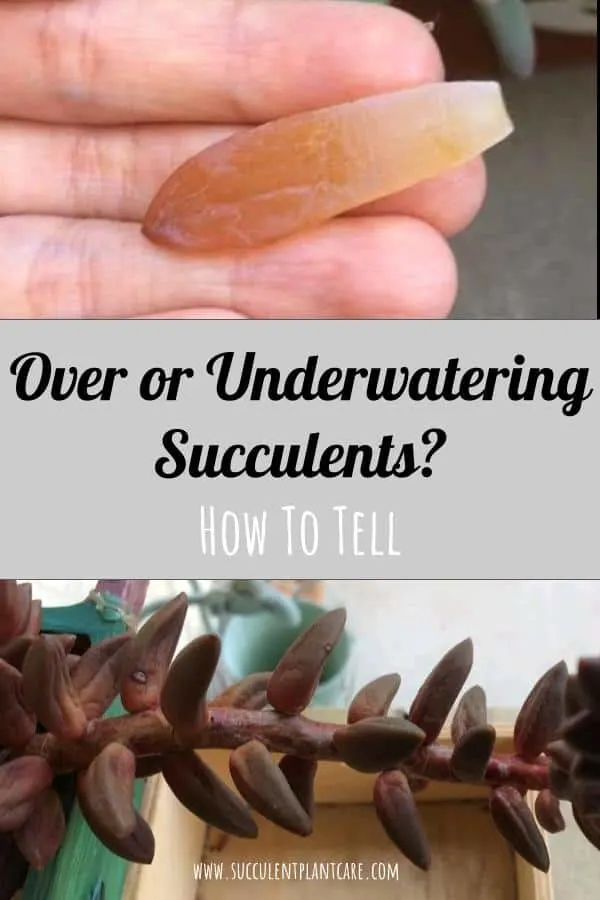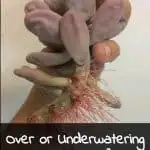When I was new to succulents, it was hard to tell whether I was over or underwatering my plants. I bombarded myself with tons of information on how to water succulents and I was left second guessing whether or not I was doing it right.
The biggest confusion for me was how to tell whether my plants were being over or underwatered. After some trial and error, I’ve learned to watch for signs to tell whether the plants were being over or underwatered.

How Can You Tell if Your Succulent is being Over or Underwatered?
The best way to tell whether your succulent is being over or underwatered is by the appearance of the leaves. An underwatered plant will have wrinkly, shriveled up leaves whereas an overwatered plant will have soft, mushy, almost translucent leaves.
These are the obvious tell-tale signs to indicate whether your succulent is being over or underwatered. Oftentimes, however, the signs are not that easy to read. An underwatered succulent may display similar behaviors as a an overwatered plant.
And this is where most people get confused. There are other things to look for so you can be certain whether you are actually over or underwatering your plants.
What Does an Underwatered Succulent Look Like?
Succulents store water in their stems, tissues and leaves. These plants have become highly adapted to very dry growing conditions so that they are able to withstand long periods of drought or very dry, arid conditions. This however, does not mean that they do not need water.
In fact, succulents love a good drink of water. If they become depleted of water, they will display signs to show that they are in need of more.
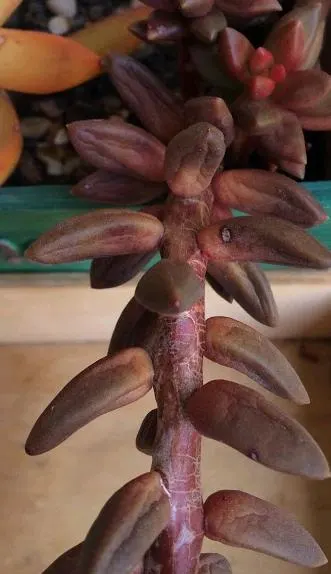
Leaves have wrinkled and shriveled up from underwatering
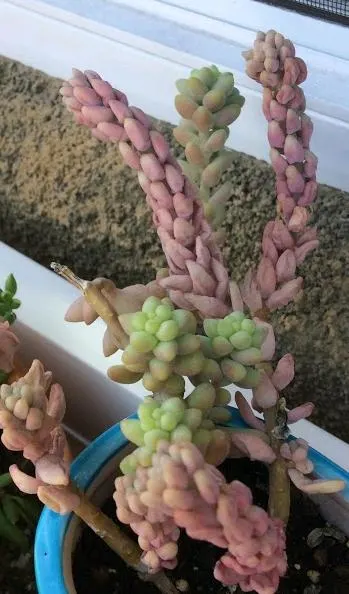
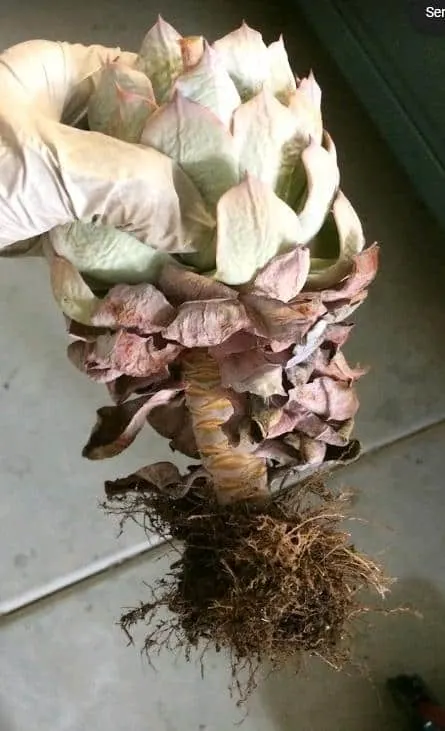
Severely underwatered echeveria with dead, dried up bottom leaves
Here’s what to look for to know that your succulent is underwatered:
- Shriveled leaves–An underwatered plant will start to have wrinkly, shriveling leaves as its water storage continue to run low. The plant will start to look droopy and wilted the more sever the water deprivation is.
- Dried up, brown, dead leaves–You will notice plenty of dried up, dead leaves from the bottom of the plant. As the plant start losing its water storage, the bottom leaves start to dry out first. Some plants will also start dropping dried up leaves to conserve water and energy for survival.
- Leaves feel soft and flat–When touched, the leaves will feel soft and flat. The leaves will lose their plumpness and firmness. An underwatered succulent will literally feel like they have deflated leaves.
What Does an Overwatered Succulent Look Like?
Succulents have water storage capacities in their tissues, leaves and stems. They can go for long periods of time without water. When a succulent gets too much water, their leaves and tissues start to swell up and eventually burst.
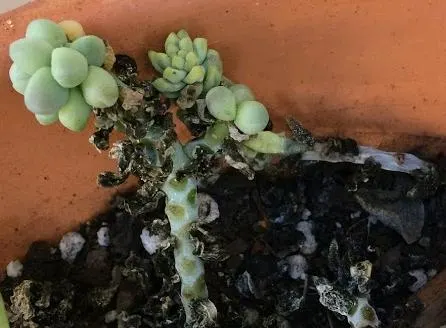
Leaves turned black from rot due to overwatering
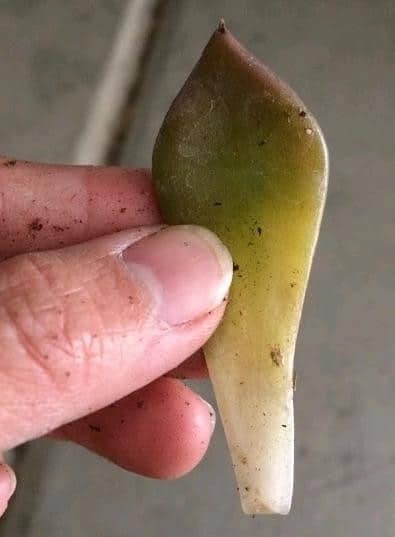
Leaf yellowing and feel soft and mushy from overwatering
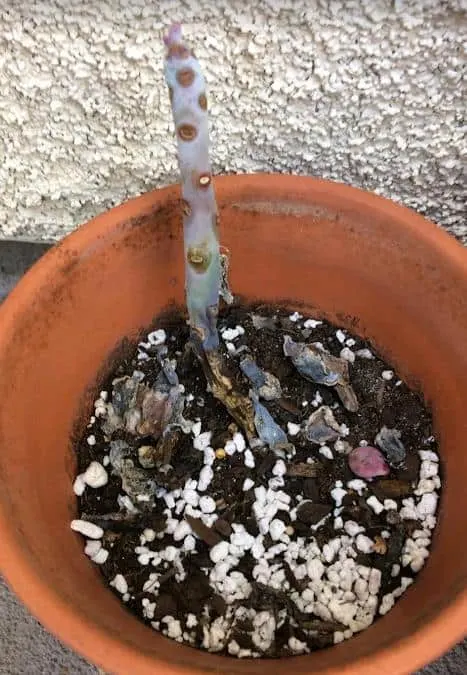
Leaves have all dropped and stem is rotting from overwatering
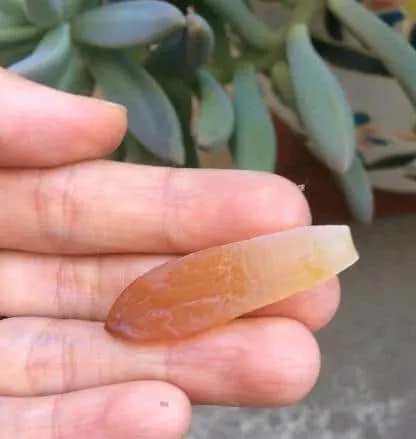
Leaf has turned translucent and feel soft and mushy from overwatering
Here’s what to look for to know that your succulent is overwatered:
- Soft, mushy, translucent leaves–An overwatered plant will have soft, mushy leaves that may also appear shriveled. And this is where people can get confused and not know whether their plant is being over or underwatered. An overwatered plant can also have shriveled leaves, but the leaves will also be mushy and translucent in appearance. The plant and the leaves have absorbed too much water and cannot take any more. The plant will also have an overall sick appearance and will not look well.
- Leaves turn black–If the overwatering continues, the leaves will start to rot and you will see them turn black. This often happens from the center of the plant and will work its way up. When this starts to happen, it means that the plant is rotting or has succumbed to a fungal disease from too much water.
- Leaves start to drop–An overwatered plant will also drop its leaves. The leaves become overly saturated with water and they swell up and start dropping leaves. Here’s how you can tell whether a plant drop leaves from over or underwatering: An overwatered plant will drop its leaves very easily, even from just a slight touch; whereas an underwatered plant will drop its bottom leaves that are brown, shriveled and dried up.
Pay Attention to Your Own Watering Techniques
The best way to tell whether you are over or underwatering is to pay close attention to your own watering habits. How often do you water your plants? Do you stick to a strict schedule or do you only water when you remember to?
These are all important information to give you clues about whether or not you need to increase or decrease watering.
Giving watering advice is tricky because it is different for everybody. It depends largely on the climate you live in, whether it is dry or humid, and the temperature, whether it is hot or cool. Watering needs also change throughout the growing season.
A good rule of thumb to follow especially in the beginning is to check for soil moisture. Feel the top inch of the soil before watering. If the soil feels, dry, you can water again.
I live in a very dry climate with plenty of sunlight and I keep all of my succulents outdoors all year long. I water my succulents every 7-10 days during the hot summer months. I cut back on watering when the weather cools down during the fall and winter season to about every 2-3 weeks.
I also like to water my plants thoroughly, meaning I give it a good drink and then let it dry out before watering again. I never mist my succulents every few days (with the exception of leaves and baby plants I am propagating). Succulents prefer to get a good drink water and then dry out.
Your watering needs may differ from mine depending on where you live and how much sunlight your plant receives, etc. While a guideline is nice to have, it is still important to figure it out on your own to see what works best for your situation. To read more on watering techniques, please click on “When and How to Water Succulents.”
What Potting Mix or Soil You Use Can Make a Difference
Proper soil and watering go hand in hand when caring for succulents. Having a suitable potting mix that is well-draining will help your plants thrive. Succulents do not like to sit in wet soil for too long, and if your potting soil is constantly wet, there are more chances for your succulents to develop root rot.
Provide a well-draining potting mix to ensure that your plant is not sitting in wet soil for too long. You can add drainage by mixing coarse sand, perlite, pumice or small pebbles to your potting mix. For more soil ideas and recipes, please click on “Best Soil for Succulents.”
Here’s a soil comparison video (opens up another tab) I created on my youtube channel.
What to Do with an Underwatered Succulent
An underwatered succulent is easier to treat than an overwatered one. I tend to underwater my succuelnts as opposed to overwater. From experience, I know it is easier to deal with an underwatered plant.
Usually, the plant will perk up after a good watering or two. Do not panic when your plant has been underwatered and overcompensate by watering too much. Just give the plant a good, thorough watering and wait until the plant dries before watering again.
The worst thing you can do is panic and overcompensate by watering too much and too often.
Start from where you are, and make necessary corrections. Let’s say you’ve been watering your plant once a month or less, increase watering to every two weeks and see what happens. You will soon notice your plant looking better after it’s been watered.
What to Do with an Overwatered Succulent
There are several things you can do for an overwatered succulent depending on the situation. First thing you can do is refrain from watering your plant again and give it a chance to dry out. I would give your plant at least a full week, even more before I water again. Feel the top of the soil and make sure it feels dry before watering again.
Also, make sure the plant is receiving adequate light to help it dry out. An overwatered succulent plant that is not receiving enough light at the same time will deteriorate rapidly. Move the plant to a brighter location or a sunnier spot. You may need to move your plant several times to find the best spot for it.
If you notice that the soil is not drying out and is staying moist, or if you think your plant is sitting in the wrong potting mix, remove the plant from the soil, let it dry out for a few days in the shade, and repot in a more suitable, well-draining potting mix.
You can add perlite, pumice, or coarse sand to add drainage to the potting mix. For more information on soil, please click on “Best Soil for Succulents.”
How to Revive a Dying Succulent Plant from Overwatering
Your plant may still be saved, depending on the extent of the damage. The best way to save your plant is to remove or cut off any dead, mushy parts from the plant and retain anything that looks green and viable. Let the cuttings dry for a few days and propagate by sticking it back in a suitable, well-draining potting mix.
The cuttings will root eventually, and a new plant will develop. I have saved many plants by leaf or stem cuttings. Sometimes all you have left from a dying plant is some leaves.
And that’s enough to start a few baby plants. Succulents are awesome plants and they these amazing inherent nature to survive no matter what’s thrown at them.
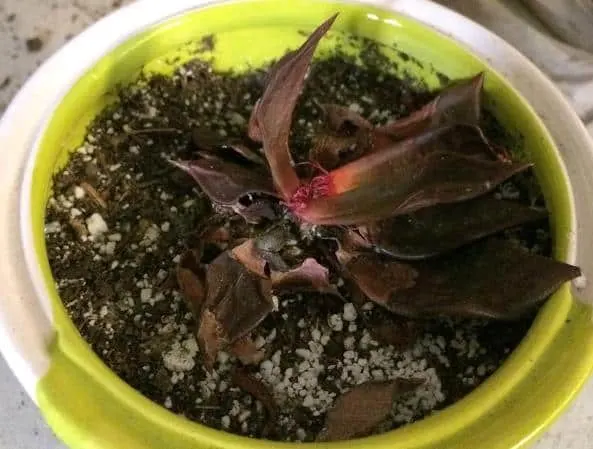
This is an Echeveria that has rotted from overwatering.
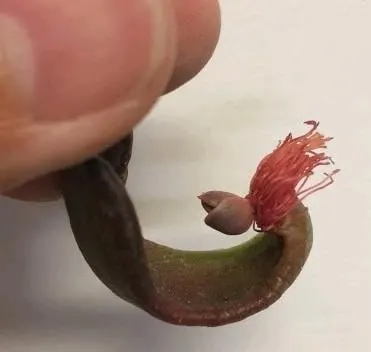
I was able to save some leaves to propagate.
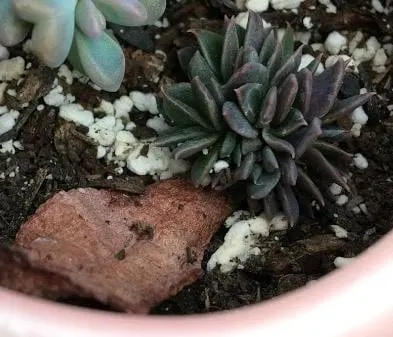
I have a few of these baby Echeverias growing from salvaged leaves.
Please check out some related articles on this topic:
“Why Are the Leaves on my Succulent Turning Brown?”
“Why Are the Leaves on my Jelly Bean Plant Falling Off?”
“Common Problems with Succulents and How to Fix Them”
There are some tools you can use to check for moisture in the soil and in the room. Please refer to my resource page for some ideas.
Pin this to save for yourself or share with others!
